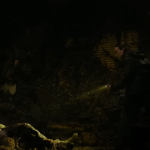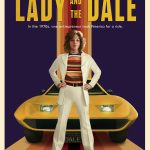The Best Uses of Popular Music on Television
There’s been a lot of buzz about a couple of absolutely stellar uses of music in some TV shows lately. From Fleetwood Mac’s ‘The Chain’ on Our Flag Means Death to Kate Bush’s ‘Running Up That Hill’ on Stranger Things, we’re all finding ourselves with some new favorite tunes on our playlist because of how awesome these scenes were.
Using music effectively in a television show is an art form. I’ve become obsessed with so many songs that have come to me via their placement in my favorite shows. Both ‘The Chain’ and ‘Running Up That Hill’ are on my current music playlist even though they both came out long before I was born. I’m absolutely obsessed with both of them, though. And I’m not alone.
Good music can be leveraged in a television show in a few different ways. Much of the time, this comes in the form of diegetic music, or music that can be heard by the characters. This is how ‘Running Up That Hill’ is introduced in Stranger Things. Max’s friends choose to use her favorite song to pull her out of the Upside Down. Sometimes this music is referred to as ‘source music.’
Other times it’s non-diegetic. The music isn’t actually happening within the narrative itself and is just being used as a mood-setting tool and pacing template. ‘The Chain’ in Our Flag Means Death is a good example of this. None of those characters are actually hearing that music being played (though I wouldn’t be surprised to learn Frenchie was strumming the tune on his lute, honestly). It accomplishes its goal of setting the pace and atmosphere of the scene.
Some shows even do a mix of both, sometimes even with the same song.
Some parameters for this list…
Before we get onto the actual list, let’s define what I’m counting as ‘popular music‘ here. It’s a broader term than ‘pop music,’ which conjures up images of boybands and pop divas. ‘Popular music,’ however, encompasses that, rock, jazz, electronic, hip-hop, country, and other adjacent genres. I’ll be basically leaving off classical and incidental music, and music exclusively created as part of a musical score. I will, however, include a couple of covers.
Additionally, when I say ‘television,’ I’m also going to be including streaming content. In our cable-cutting world, however, that part is probably a given. Still, it’s good to define what we’re talking about here.
Please also heed the context and warnings. And be advised that the context I provide, as well as the clips embedded in the article, will contain spoilers. This isn’t going to be a safe article for the spoiler averse.
And finally, this list is comprised of my personal favorites. There are a lot of shows that are apparently really excellent with this (The Wire is apparently quite good), but I simply don’t watch them. Feel free to drop your favorites in the comments, but be aware that comments with multiple links tend to get caught in our spam filter.
–
–
Stranger Things Season 4 Episode 4
Running Up That Hill – Kate Bush
We’re going to go ahead and jump right in with one of the two examples that inspired this list. The use of ‘Running Up That Hill’ was so good that it put the song on the charts again 36 years after it first came out. Truly remarkable!
And now, a message from Kate Bush pic.twitter.com/a4qPPDBDXG
— Netflix (@netflix) June 5, 2022
Context: Max has been taken to the Upside Down, which is basically a terrifying hellish alternate universe. The monster, Vecna, is about to kill her, but her friends use her favorite song to pierce through to the Upside Down and save her life.
–
–
Our Flag Means Death Season 1 Episode 8
The Chain – Fleetwood Mac
Now let’s look at the second example that inspired this list.
Our Flag Means Death has been a cultural phenomenon and its use of music is one of the highlights. All the popular music featured is considered an Anachronistic Soundtrack, which enhances the other anachronisms of the series – Oluwande’s crocs, the mention of ‘fanfiction,’ the implications that there’s a Yelp equivalent at the time, etc. These things add to the almost mystical quality of the series. It feels like its own little world.
There are a lot of great music options from the series to choose from, but I think the one that comes to mind first for many is the use of ‘The Chain’ by Fleetwood Mac. It’s become a sort of fandom theme song at this point, working its way into fan works on a fairly frequent basis. Some have jokingly referred to the sequence as a ‘cultural reset.’ But are they joking? Because it certainly feels like it, honestly.
Context: Captain Stede Bonnet and his pirate crew have been cornered by the British. His former co-captain, Blackbeard, was about to part ways with the crew and partner with Calico Jack in what can only be described as a co-captain divorce. Once Blackbeard realizes Calico Jack has betrayed Stede, he changes his mind about leaving and goes back to save his love and the crew off the Revenge.
Warnings: Mr. Button’s is quite nude. Brace yourself for a moment of bare ass.
–
–
Legion Season 1 Episode 1
Happy Jack – The Who
There are many options in Legion to choose from and I was completely incapable of narrowing it down to one. Even narrowing it down to just two (the maximum I’m allowing myself per show on this list) has been difficult.
Additionally, I can’t include my favorite, Bolero, since it’s actually a classical piece of music (albeit, a cover of it). I set my own rules for this list, so it not qualifying for it is entirely my fault. I played myself here.
That said, here’s the first one of the bunch.
Context: This musical montage introduces the main character of the series, David Haller. It’s the very first scene of the entire show, so not much context is needed.
Warnings: Suicide attempt
–
–
Legion Season 1 Episode 4
Undiscovered First – Feist
In addition to using classical and rock music, Legion made great use of modern alternative music. This use of a song by Feist remains one of the most interesting uses of music in the series. As Legion pretty much became known for that very thing, it’s worth noting and including on the list. The editing deserves all the praise here.
Context: This one requires a lot of context, so brace yourself. The series was very complex and absolutely wild. Even with this context, you’ll still probably be a bit confused.
The man with the broom and the girl kicking butt in the forest are psychically linked. They often share the same body and basically have the same name – Kerry and Cary. When she’s hurt, he feels it.
Jemaine Clement is playing a mutant trapped in an interdimensional ice cube with a record player. No, I won’t give more context for that one. Just go watch the show if you need to know. It’s too hard to explain!
The woman in the red coat and the man with the gun are tracking down clues for the season’s ongoing mystery. The man that interrupts them is from the mysterious Division 3 government organization. The woman has the ability to switch bodies with anyone she touches.
The brief scene with flashing lights features two Division 3 prisoners.
Almost everyone has superpowers.
Enjoy!
Warnings: Brief moment of flashing lights, violence.
–
Six Feet Under Season 5 Episode 10
Breathe Me – Sia
This one is one of my all-time favorites. It’s gone down in history as one of the best show finales of all time. The use of the Sia song is a huge part of that.
For some reason, HBO has been scrubbing this scene in its raw form from YouTube. People have synced the song with the scene so, at the very least, you can see how it works with the music. This means, unfortunately, all the diegetic sounds that aren’t music – crying, applause, conversation, etc. – are muted. It gives the sequence a hollow vibe as a result.
If you want to see how the sequence as the creators intended, bring up the final episode on HBO Max and fast forward an hour into it. If you’ve got twelve minutes at the end, you’re at about the right place.
Context: Claire Fisher is leaving her family home in Los Angeles and headed to New York to pursue a career as a photographer. Her brother died just a couple of days prior. She considered not going so she could be with her family as they mourn his loss, but they encourage her to go anyway.
The Fisher family owns a funeral home, and each episode up until this point started with a death. These were usually characters created specifically for that episode (with a few exceptions, like her brother). When the character dies, they were given a death placard with their name, birth year, and death year.
This sequence fast-forwards through all the main character’s lives, showing how they die, and giving every one of them a chance to have that iconic placard. Most of the characters are also welcomed into the afterlife by their loved ones who have already died.
–
Westworld Season 3 Episode 4
Wicked Games – The Weeknd (Cover by Ramin Djawadi)
I’m in love with all things Ramin Djawadi. With Game of Thrones he largely created original music (‘Light of the Seven‘ is a masterpiece), but for Westworld he made covers of popular music, most notably ‘Paint It Black.’ However, my favorite use of it was the instrumental cover of ‘Wicked Games’. It’s an intense tune that somehow works perfectly with the classical music style it gets paired with. The mood for this entire long sequence is guided by the song, with it building in intensity when the two of them get into an all-out brawl.
Context: Dolores, played by Evan Rachel Wood, has escaped the robot theme park Westworld and is out for revenge (and perhaps a bit of a world takeover, too). When she’s about to take down one of her biggest targets, she’s thwarted by some other robots who have other plans.
Warnings: Full frontal nudity, drug use, and derogatory discussion of sex work.
–
Westworld Various Episodes
Paint It Black – The Rolling Stones (Cover by Ramin Djawadi)
I can’t have this list and mention Westworld without talking about ‘Paint It Black.’ While it wasn’t my favorite (see the above entry on this list), it has become an absolutely iconic use of music for the series. It has been used numerous times and in a couple of different styles.
Context: Westworld is an extensive theme park where the ultra-rich can completely immerse themselves in a Western-themed fantasy world. There are several other similar parks with different themes, such as Fantasyworld, Romanworld, and The Raj (India-themed). These fantasy worlds are inhabited by robots, known as ‘Hosts,’ who have been generally unaware that they aren’t real people. However, that starts to seriously break down and some of them realize what they are and where they are. And they aren’t really all too happy about it.
These scenes feature usage of the song in season one, with Hosts playing their part for the wealthy tourists, as well as usage in season two, where some of the Hosts and park employees end up in Shogunworld. The use of the song highlights the fact that they recycled the same plot between the two parks, which one of the characters admits to while they’re being used as human shields.
Warnings: Graphic Violence
–
–
Lost Season 2 Episode 1
Make Your Own Kind of Music – Mama Cass
One of the most chaotic examples of a song used well in a show comes from one of the most chaotic shows: Lost. This is an oldie, but a goodie.
The song and the scenes play into the Mundane Horror trope perfectly. The song and many of the tasks being performed feel mundane, but small pieces stick out as unnerving and abnormal. What’s he injecting? What did he punch into the computer? Then we get a Musical Interruption and it’s revealed that our mystery man has a huge weapons cache. This is definitely a weird situation.
This is also an example of a Diegetic Switch (there are a couple of those on this list, such as the Sia song in Six Feet Under). The song starts as something being played by the character, but then becomes background music that obviously isn’t playing in real-time as he goes about his day. It carries the mood through the entire sequence even when it presumably would have ended in-universe.
Context: The previous season ended with the survivors of the plane crash finding a secret bunker in the jungle. This is what’s in the bunker.
–
–
Moon Knight Season 1 Episode 1
Wake Me Up Before You Go Go – Wham!
This one is an example of Soundtrack Dissonance. The trope basically means the music and the action on the screen are incongruent. In this case, it’s a car chase set to a Wham! song. Can’t get much more dissonant than that!
The Moon Knight series has been absolutely incredible, and the incredible original score by Hesham Nazih is notable. The series doesn’t make much use of popular music, except for a couple of notable exceptions (one of which is a bit controversial). I’ll be highlighting the usage of two of them on this list.
Context: British gift shop clerk Steven Grant has been having blackouts and waking up in strange places. One of those strange places ends up being a small village high in the Alps that is apparently being run by a cult. These cult members seem to think Steven is some sort of mercenary (spoiler: that would be Marc Spector, and not Steven) and are trying to get a mysterious beetle that he has in his possession. He steals a cupcake van and tries to escape as quickly as he can, but the cultists chase him down.
https://www.youtube.com/watch?v=J2pYHzgYTx4
–
–
Moon Knight Various Episodes
‘A Man Without Love’ by Engelbert Humperdinck
This is another incidence of a song being used twice to convey parallels, sort of like how ‘Paint It Black’ was used in Westworld. In this case, ‘A Man Without Love’ is used to highlight very different mornings for our protagonist, Steven Grant. For the first usage of the song, you can’t help but notice how depressing the lyrics are as they relate to the character.
Every day I wake up, then I start to break up
Lonely is a man without love
Every day I start out, then I cry my heart out
Lonely is a man without love
Context: Steven Grant is an alter of Marc Spector, a man with Dissociative Identity Disorder. The first time the song is used, Steven is waking up and going through his routine, which is filled with traps intended to make sure he didn’t venture out overnight. At this time, he’s unaware of his diagnosis and thinks he just has some sort of severe sleeping disorder. He’s very lonely here, not being able to make lasting relationships due to the complications his blackouts cause him.
The final instance of this song highlights his new routine, with Marc Spector a full and active part of his life now. The lyrics aren’t as relevant this time around as he’s definitely found companionship, but as the scene ends, we see there are still some parallels to their life now and how Steven started the series. They’re still taking precautions to some degree as they seem to suspect there’s a third person in the body. (And they are right. Three cheers for my boy, Jake Lockley!)
–
–
Battlestar Galactica Season 3 Episode 10
All Along the Watchtower – Bob Dylan (Cover by Bear McCreary)
This is another cover of a famous song, but this time it’s by Bear McCreary. As far as I’m concerned, both Ramin Djawadi and Bear McCreary are allowed to cover whatever songs they want for their shows. They’ve been spot on with their choices.
This one is also going to need a lot of context so buckle up.
Context: Four people have been hearing bits of a song that nobody else can hear (known as a Dream Melody). They follow it and end up in a room together where a switch flips in their heads. They all suddenly become aware that they’re Cylons (robots) and they have been since the beginning. Then the Cylon fleet attacks and they need to make a split-second decision about which side they are truly fighting for.
The song that plays over the scene is the one the Cylons have been hearing that triggered them. We’ve been hearing snippets of it, but this is the first time the full song is played.
Meanwhile, a character named Lee Adama is leaving the high-profile trial of Gaius Baltar. He gave up his job as a fighter pilot, but as the fleet attacks, he decides to hop in a Viper and help. The character at the end of the scene that pulls up alongside Lee’s Viper, Kara Thrace, had died a few episodes prior to this. Her Viper exploded right in front of Lee.
Warning: Sorry this is potato quality. This one also has a history of being taken down and all the higher quality ones have been removed. If you find this article years from now, I wouldn’t be surprised if this video has been removed, too.
–
–
Sherlock Season 2 Episode 3
Sinnerman – Nina Simone
Putting aside any feeling about Sherlock’s story and release schedule (years between seasons was torture!), it was actually a pretty darn well-constructed show. This scene, in particular, made waves when it first aired due to its intensity and creativity.
It’s fast-paced and lively while the scenes edited to the music switch between similar pacing and a couple of dramatic slow-motion sequences, as well as clips of our protagonists getting ready and heading to the trial. The quick and frantic editing, along with the splashes of news headlines, flows along with the music beautifully.
If you watched the Olympics, you may recall this song was also used for one of Team USA’s skaters. Nina Simone is just iconic. It’s no mystery why creatives like to use her music for their own projects.
Context: Sherlock’s biggest antagonist, Moriarty, goes to trial for his crimes.
Author: Angel Wilson
Angel is the admin of The Geekiary and a geek culture commentator. They earned a BA in Film & Digital Media from UC Santa Cruz. They have contributed to various podcasts and webcasts including An Englishman in San Diego, Free to Be Radio, and Genre TV for All. They identify as queer.
Help support independent journalism. Subscribe to our Patreon.
Copyright © The Geekiary
Do not copy our content in whole to other websites. If you are reading this anywhere besides TheGeekiary.com, it has been stolen.Read our







